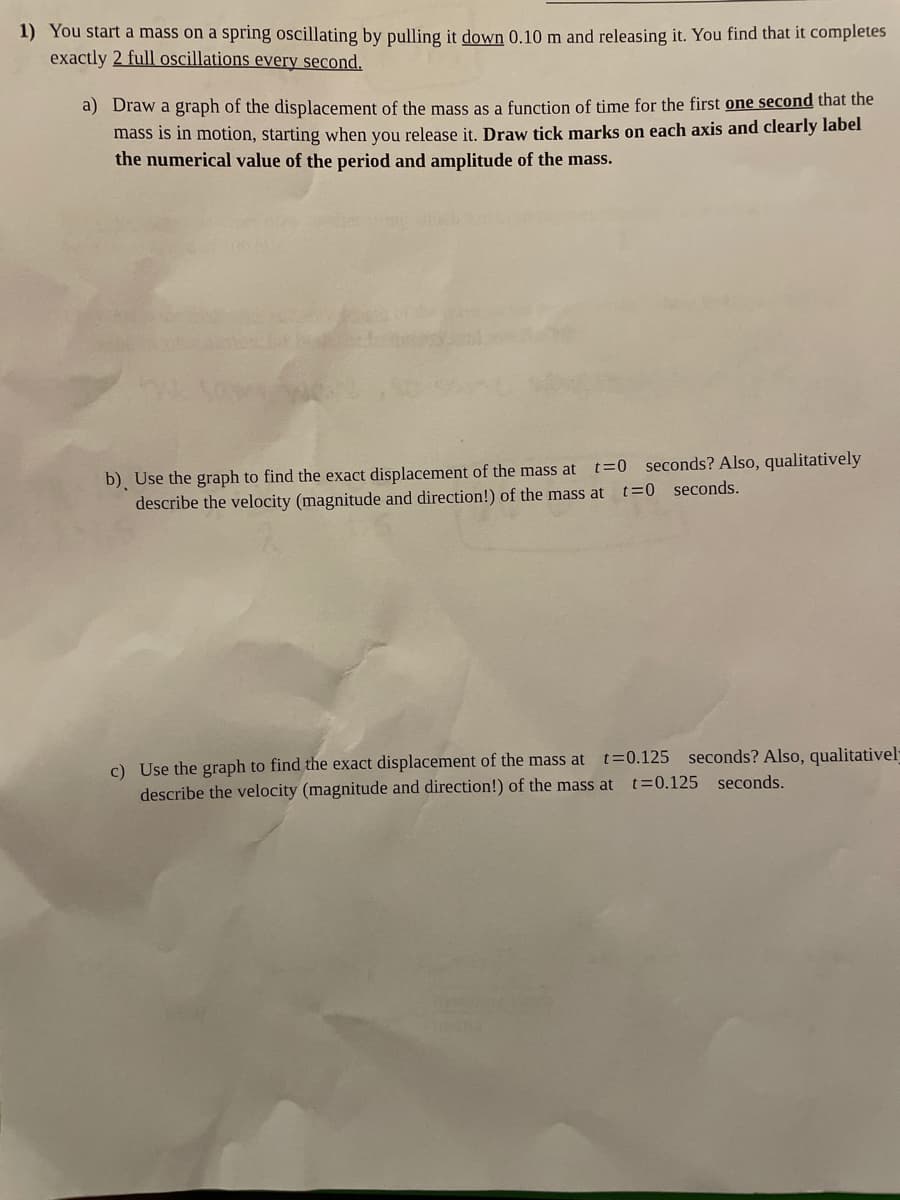You start a mass on a spring oscillating by pulling it down 0.10 m and releasing it. You find that it completes exactly 2 full oscillations every second. a) Draw a graph of the displacement of the mass as a function of time for the first one second that the mass is in motion, starting when you release it. Draw tick marks on each axis and clearly label the numerical value of the period and amplitude of the mass. t=0 seconds? Also, qualitatively b), Use the graph to find the exact displacement of the mass at describe the velocity (magnitude and direction!) of the mass at t=0 seconds. c) Use the graph to find the exact displacement of the mass at t=0.125 seconds? Also, qualitativel describe the velocity (magnitude and direction!) of the mass at t=0.125 seconds.
Simple harmonic motion
Simple harmonic motion is a type of periodic motion in which an object undergoes oscillatory motion. The restoring force exerted by the object exhibiting SHM is proportional to the displacement from the equilibrium position. The force is directed towards the mean position. We see many examples of SHM around us, common ones are the motion of a pendulum, spring and vibration of strings in musical instruments, and so on.
Simple Pendulum
A simple pendulum comprises a heavy mass (called bob) attached to one end of the weightless and flexible string.
Oscillation
In Physics, oscillation means a repetitive motion that happens in a variation with respect to time. There is usually a central value, where the object would be at rest. Additionally, there are two or more positions between which the repetitive motion takes place. In mathematics, oscillations can also be described as vibrations. The most common examples of oscillation that is seen in daily lives include the alternating current (AC) or the motion of a moving pendulum.

Trending now
This is a popular solution!
Step by step
Solved in 3 steps with 2 images









